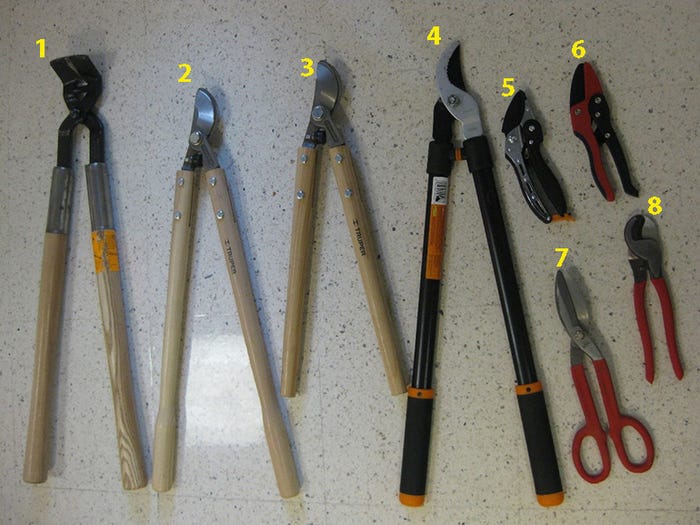Even with an appropriate tool, trimming feet is no easy task, so we have provided some tips and tricks to get the job done.
November 7, 2019

Overgrown toes and dew claws (digital overgrowth) impair animal well-being and impact producer profitability by increasing lameness prevalence, reducing sow longevity and negatively impacting reproductive throughput.
Causes of digital overgrowth are not well understood and frequency can vary greatly between farms. Data collected on cull sows in 2007 found digital overgrowth to be more frequent in older parity sows (Knauer, 2012) and more common on rear feet (Knauer, 2007). Knauer (2007) further found that digital overgrowth is associated with missing dew claws and may be due to the lack of physical wear on the hoof from physical contact with the ground (Barczewski, 1990).
Digital overgrowth in the breeding herd is concerning, given cull sows with rear digital overgrowth farrowed fewer piglets in the litter prior to culling and had lower pigs per sow per year than sows with normal toes and dew claws (Knauer, 2012). This data is supported by Fitzgerald (2012) who found that sows with rear digital overgrowth consumed less feed during lactation. Reduced lactation feed intake is well known to impair subsequent reproduction.
Perhaps more work is needed in the area of digital overgrowth. Zinpro has been an industry leader in developing foot lesion scoring systems and corrective trimming methodologies. Building upon their success, we hope to identify cost effective strategies to manage and prevent digital overgrowth.
We conducted a small pilot study evaluating the effectiveness of eight store bought tools (Figure 1) for trimming overgrown toes and dew claws on the rear feet. The tools ranged in price from $8 (cable cutter) to $80 (hoof trimmer). Most tools were able to trim dew claws but long handled tools were superior to the short, hand-held tools as they provided greater leverage to trim toes. Of the tools that were evaluated, the Fiskars bypass loppers ($30) appeared to work best in that they required the least strength. This is not surprising given several production systems in North America have implemented this type of tool for trimming.

Even with an appropriate tool, trimming feet is no easy task, so we have provided some tips and tricks to get the job done:
Overgrown dew claws are relatively simple to trim and can be easily clipped from behind the stall when the sow is standing.
Toes require much more strength to trim and are more difficult to access from the rear of a sow.
For individuals trimming toes with the less physical strength, waiting until the sow is lying down is helpful as it allows the trimmer to place the bottom handle of the bypass lopper on the floor to gain stability and leverage.
Using a two-person team, one person can use a sort panel to back a sow out of the stall so her rear feet are just in the aisle while a second person trims the long toe with a bypass lopper.
Regardless of your trimming technique, trimming should be done conservatively. We recommend trimming 0.5 to 2 inches, depending on the extent of the digital overgrowth. Be careful not to clip off too much, you can always make a second trim if needed.
Next steps. We plan to look at the economics of trimming digital overgrowth. How much does clipping digital overgrowth improve reproduction, sow retention and farmer profit when compared to untrimmed sows?
The authors would like to thank the cooperating North Carolina production system for making this project possible. Questions can be sent to Mark Knauer and Monique Pairis-Garcia.
References:
Barczewski, R. A., E. T. Kornegay, D. R. Notter, H. P. Veit, and M. E. Wright. 1990. Effects of feeding restricted energy and elevated calcium and phosphorus during growth on gait characteristics of culled sows and those surviving three parities. J. Anim. Sci. 68:3046-3055.
Fitzgerald, R. F., K. J. Stalder, L. A. Karriker, L. J. Sadler, H. T. Hill, and J. Kaisand. 2012. The effect of hoof abnormalities on sow behavior and performance. Livest. Sci. 145:230-238.
Knauer, M., K. J. Stalder, L. Karriker, T. J. Baas, C. Johnson, T. Serenius, L. Layman, and J. D. McKean. 2007. A descriptive survey of lesions from cull sows harvested at two Midwestern U.S. facilities. Prev. Vet. Med. 82:198-212.
Knauer, M., K. Stalder, T. Baas, C. Johnson, and L. Karriker. 2012. Physical conditions of cull sows associated with on-farm production records. Open J. Vet. Med. 2:137-150.
Source: Mark Knauer, Brooklyn Wagner, Zack Peppmeier and Monique Pairis-Garcia, North Carolina State University, who are solely responsible for the information provided, and wholly own the information. Informa Business Media and all its subsidiaries are not responsible for any of the content contained in this information asset.
You May Also Like



